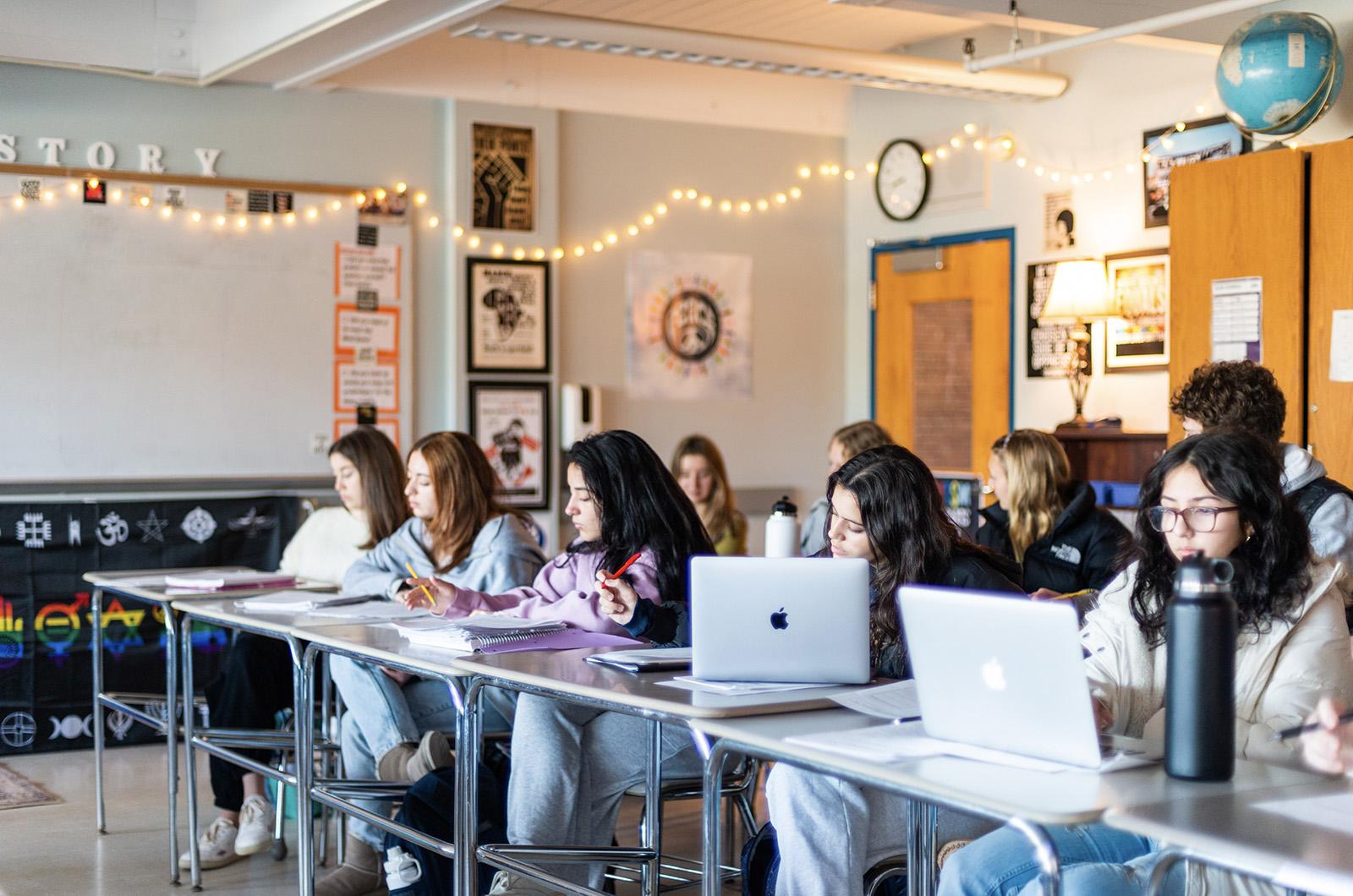Public schools on Martha’s Vineyard are taking a closer look at how fairly they educate a diverse student body of more than 2,200 children, following a year-long study that consulted with parents, teachers and pupil focus groups across the Island.
Results from the study, released last week, will help school leaders tailor their policies and methods to meet the learning needs of all their students, All Island School Committee chair Amy Houghton said.
“This is something... for us to keep it on the front burner as we’re working on policy development [and] budgets,” Ms. Houghton said, at the committee’s monthly meeting Thursday.
Introducing a review of the study’s results, Martha’s Vineyard Regional High School assistant principal Sheryl Taylor told the committee the formerly-named “equity audit” now is being called an “equity self-reflection tool,” because it was performed by the Island district itself.
“We’re moving away from the term ‘audit,’” Ms. Taylor said.
School officials worked with the nonprofit Mid-Atlantic Equity Consortium to design and conduct the equity study, which began in August, 2023 and included focus groups with students in grades seven through 12.
“The process captures the perspective of our staff, caregivers and students, providing valuable insights into our collective progress,” Ms. Taylor said Thursday, as she and school resource specialist Kim Garrison presented an overview of the results.
Overall, they said, Island schools are seen as safe and generally welcoming environments.
“Students typically feel that they have positive interactions and they are respected by staff and administrators, [as are] their families as well,” Ms. Garrison said.
Teachers, students and families also generally agreed that the schools are academically rigorous, she said.
The study found wide-ranging school equity policies that take into account differing race, language and socioeconomic conditions. But those policies are vague and limited, as in the case of gender identity and expression, such as restroom access for transgender students and staff.
The Wampanoag tribe called for more transparency in school discipline policies as well, Ms. Garrison said.
The study also found that Island children, as a body, look very different from the school committees and parent-teacher groups who make decisions on their behalf.
“Many schools reported that family and community involvement does not reflect the diverse demographics of their student population,” according to a summary linked to the Martha’s Vineyard Public Schools website.
This shortcoming is mirrored at school events and activities, Ms. Garrison said.
“There’s a need for greater diversity in planning and participation in school events... specifically including student voices,” she said.
As part of the study, Island schools assessed their own performance in areas affecting equitable access.
Most schools said they have well-established or emerging policies to offer advanced academic opportunities for students, provide language interpretation for families and hire well-being specialists such as psychologists, nurses and social workers.
Schools also have copious student data that could prove valuable in determining future policies, but are still developing the capacity to analyze the information effectively, the study indicated.
Families in the study gave the schools high marks for communication, with about 90 per cent of students’ caregivers saying they are pleased with the amount of information they receive and the way it is provided.
About half of the caregivers also said they remain concerned about learning losses from the Covid-19 pandemic and shutdowns that began in March, 2020.
Detailed results from the equity study are linked on the mvyps.org website, along with a narrative “story map” summarizing the report.
The pursuit of educational equity, which is also a goal of the Massachusetts Department of Elementary and Secondary Education, has been a longstanding priority for Island schools, Ms. Houghton said Thursday.
“This process of looking at equity [in] our schools has been a part of our culture for a lot of years,” she said.
“I think there’s a misperception that... the school was required to do this,” Ms. Houghton continued. “This has been something that we’re trying to really build as part of the fabric of the school system, and and I just want to put that out there so there isn’t a misperception that there was some big hoo-ha that required this.”






Comments
Comment policy »